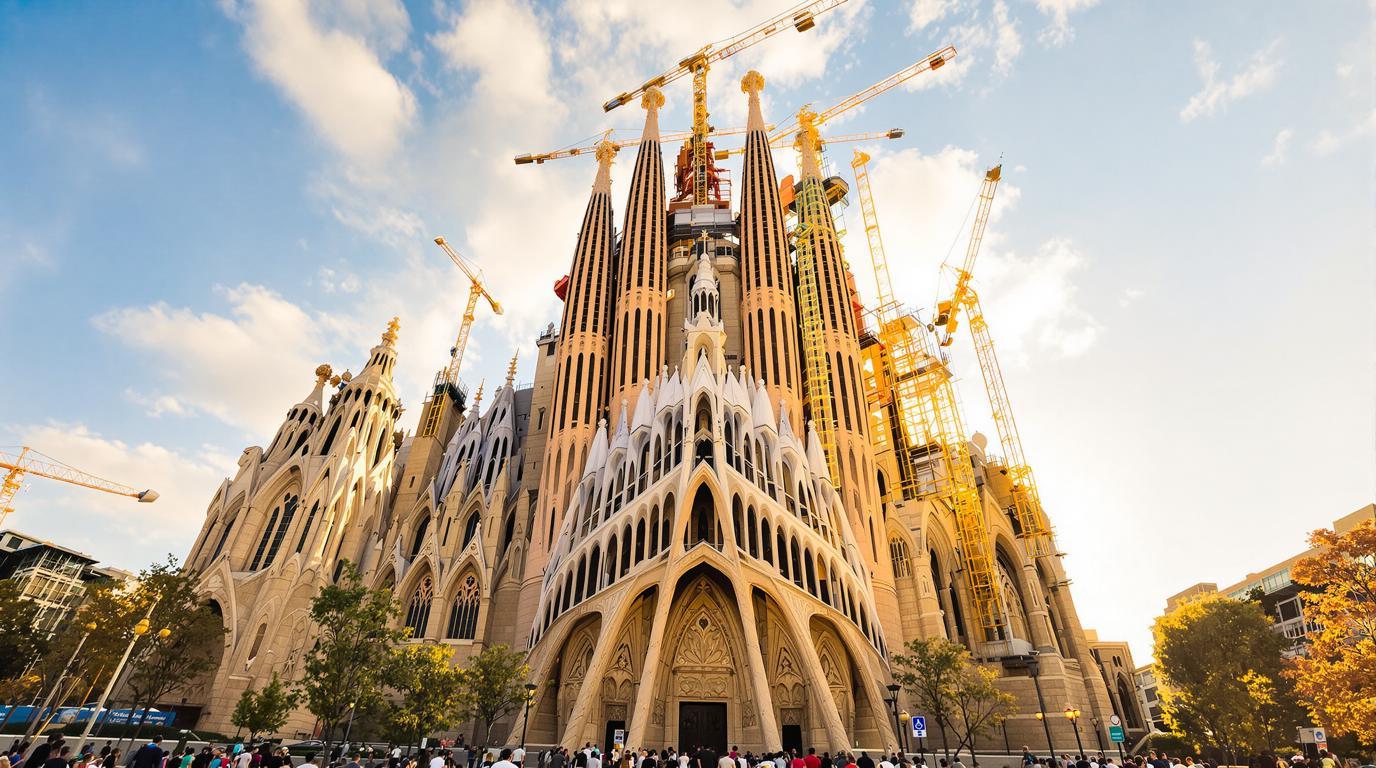Barcelona’s Sagrada Familia stands as one of humanity’s most audacious architectural endeavors. This unfinished masterpiece has been under construction since 1882 and captures the imagination of nearly 5 million visitors annually who stand in awe of its soaring towers and honeycomb facades. What keeps drawing travelers to this perpetual work-in-progress? The answer lies in its unique blend of spiritual symbolism and architectural innovation.
The 140-year construction marathon
Antoni Gaudí’s magnum opus wasn’t supposed to take this long. When he took over the project in 1883, even he couldn’t have imagined that his basilica would still be under construction in 2023. Despite modern technology accelerating the process, completion is now slated for 2026, marking the centennial of Gaudí’s death.
“The Sagrada Familia is made by the people and is mirrored in them. It is a work that is in the hands of God and the will of the people,” Gaudí once said, perhaps foreseeing the generations of craftspeople who would carry his vision forward.
A forest of stone and light
Step inside the basilica and you’ll understand why it’s worth the wait. Massive tree-like columns branch outward to support the ceiling, creating a stone forest bathed in colored light from stained glass windows. The effect transforms throughout the day as sunlight shifts across the interior.
The basilica features three distinctive facades – the completed Nativity and Passion facades, plus the still-under-construction Glory facade. Each tells biblical stories through dramatically different artistic approaches, from the ornate and organic to the stark and angular.
Beyond the tourist crowds
While the main areas can be packed with visitors, especially during summer months, the basilica harbors lesser-known spots. The crypt houses Gaudí’s tomb and offers a quieter, more contemplative atmosphere. The museum in the basement displays fascinating plaster models and explains the mathematical principles behind Gaudí’s designs.
For the best views with fewer crowds, arrive at opening time (9:00 AM) or visit during the winter months when Barcelona sees significantly fewer tourists compared to Mediterranean summer hotspots.
A photographer’s paradise
The Sagrada Familia offers endless photographic possibilities. The morning light illuminates the Nativity Facade, while afternoon sun dramatically highlights the Passion Facade. Inside, the columns and vaults create geometric patterns that change with every step.
“The straight line belongs to men, the curved one to God,” Gaudí famously stated. This philosophy manifests throughout the basilica’s organic curves and hyperbolic geometries that photographers find endlessly captivating.
Beyond the basilica
The neighborhood surrounding Sagrada Familia rewards exploration. The Eixample district features wide, tree-lined avenues arranged in a distinctive grid pattern, making it easy to navigate on foot. Consider making Barcelona part of a larger European journey by rail to experience more architectural wonders.
Practical wisdom
Book tickets online at least a few days in advance, as on-site tickets frequently sell out. A basic entry ticket costs approximately €26, but investing in a guided tour (€50+) provides invaluable context. The basilica is accessible via metro lines L2 and L5 to the Sagrada Familia station.
If you’re seeking warm Mediterranean destinations, Barcelona’s climate is considerably milder than other tropical getaways with temperatures reaching 32°C in spring.
A spiritual experience beyond religion
While the Sagrada Familia functions as an active Roman Catholic church, its appeal transcends religious boundaries. Local architect Marta Domènech explains: “Even non-religious visitors describe feeling something profound here. Gaudí understood how to create spaces that elevate the human spirit through light and form.”
“When you visit the Sagrada Familia, you’re not just seeing a building—you’re witnessing a century-spanning act of faith and creativity,” notes architectural historian David Martinez.
For travelers seeking alternatives to Barcelona’s energy, consider undiscovered island destinations or scenic European train journeys that offer different but equally memorable experiences.
The Sagrada Familia stands as a testament to human creativity, patience, and vision. In a world of instant gratification, it reminds us that some achievements require generations to complete—and that the journey itself becomes part of the magnificence.
